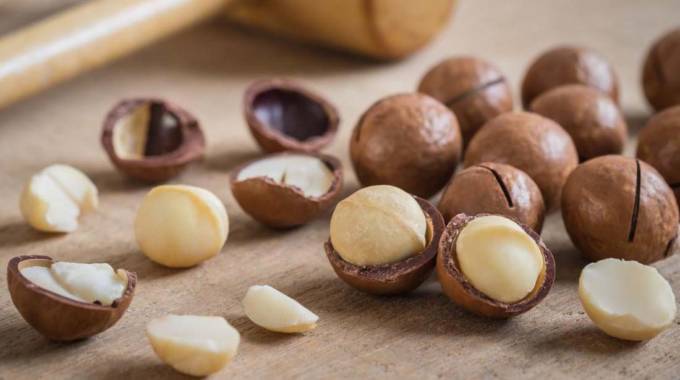
The Sunday Mail

Word From The Market with AMA
Macadamia nuts are one of the crops whose market is experiencing exponential growth. The global industry is estimated to be US$600 million with Zimbabwe’s export of the nut valued at US$20,6 million.
Further, The World Macadamia Organisation estimates that the supply will double in the next four to five years, and triple within a decade. In recent years, there has been a surge in macadamia nut production particularly by smallholder farmers in Manicaland province. With more players coming on board, the macadamia industry can emerge as one of the major drivers of economic growth and employment creation.
What are macadamia nuts?
Macadamia nuts are edible seeds of the evergreen macadamia, a sub-tropical fruit tree belonging to the Proteaceae family. The nuts are native to the eastern coast of Australia and New South Wales and as such as commonly known as the Queensland nut or bauplenut. They thrive in sunny and not so humid climatic conditions.
Macadamia trees start life as nursery-sown nuts, when they are about 30cm, the seedlings are transplanted into the fields at a spacing of three metres.
The seedlings grow into a four-metre tree and will start to bear fruit between three and six years. The macadamia nut trees have a life span of between 30-40 productive years. The nuts ripen after ten months after the fruit development stage. Nut picking is done between March and April. One tree can produce up to 20kg per harvest or 100kg nut per season.
The macadamia nuts have many uses which vary from being eaten raw or roasted (oil roasted /dry roasted) as a snack, used in the confectionery and baking industry as an ingredient, the extracted oil is used in the cosmetic industry to make soaps, lotions and shampoos and the crushed nuts are used to make butter spreads and salad oils.
Shells have their use as mulch, planting medium, plastic manufacture and as a substitute for the sand-blasting process. The husks are used as mulch and composted for fertiliser.
Macadamia nuts are increasingly becoming an important crop in the economy of Zimbabwe as it is a source of income, a livelihood for both large-scale and small-scale farmers alike, it is an export earner and a raw material into the industry.
Thousands of people in the Manicaland provincial area estimated that each season more than 4 500 personnel are employed on both the farms and factories.
The crop has growth potential, as the global demand grows, and more farmers turn to it as a cash crop.
There has been a steady increase in the production levels of macadamia nut since the adoption of growing the crop by the Zimbabwean farming community around 2000.
More and more farmers will be expected to adopt the growing of the crop since it has proven to be a lucrative crop both on the local market and the international market. In 2019, macadamia contributed to 69 percent of all horticultural crops.
Production
In Zimbabwe, macadamia nuts are grown mainly in Chipinge, Chimanimani ,Nyanga and Honde valley in the Manicaland province, in the Eastern Highlands of the country. The crop can, however, be grown in Agro-ecological Regions One to Three.
Neighbouring countries that produce macadamia nuts are South Africa , Swaziland and Malawi. Globally, macadamia nuts are grown in Australia, Brazil , United States of America , Israel , Thailand, Kenya, Costa Rica, New Zealand ,Colombia and Guatemala.
In Zimbabwe, macadamia production started around 2000 in the eastern border and is being grown by large-scale commercial farmers/estates, small-scale commercial farmers as well as smallholder communal farmers.
Two species of macadamia nuts are currently bring grown in the country. These are M.intergrifolia and M. teraphllya. During the 2019/2020 production season, a total of nine hundred and sixty-one (961) growers were registered to grow the crop.
Training
The macadamia nut industry is still young and thus farmers require training on best practices and value addition. In the last two weeks, the AMA in partnership with Macadamia Nuts Association of Zimbabwe embarked on farmer training in Manicaland and Mashonaland East.
The purpose of the training was to equip farmers with knowledge and skills on the macadamia nut business at large. Running under the theme, “Sustainability of Macadamia nuts Production”, the training covered a myriad of subjects ranging from nursery establishment, the establishment and management of macadamia nut orchards, harvesting and selling of macadamia nuts.
The training is expected to increase macadamia nut production in the country and foreign currency revenues.
In the same vein, they will serve as a catalyst for the quick growth of the lucrative trees in other provinces such as Mashonaland East and Mashonaland Central where some farmers have started growing the trees.
South Africa is the largest producer of macadamia nuts in the world followed by Australia and Kenya respectively.
◆ Word from the market is a column produced by the Agricultural Marketing Authority (AMA). Feedback [email protected] or [email protected]



